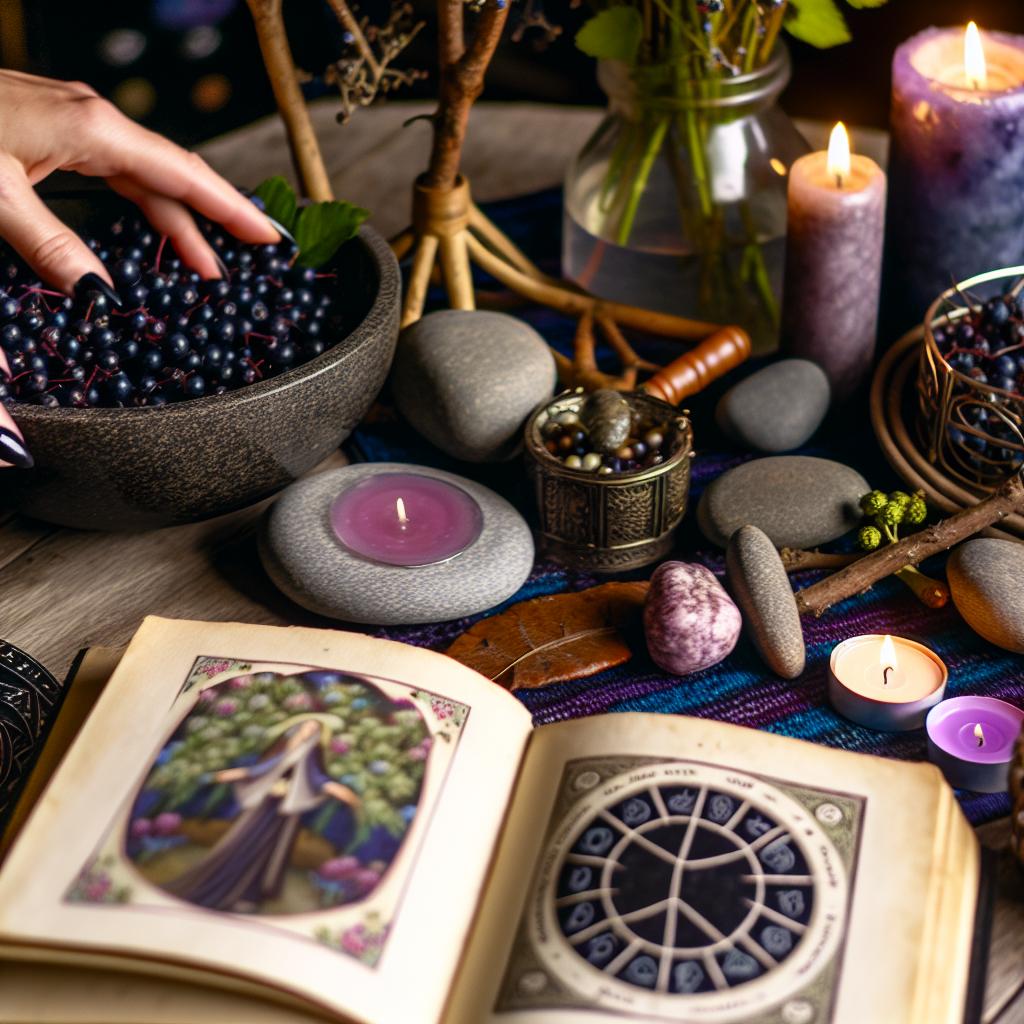Content:
The Significance of Elderberry in Pagan Rituals
In many pagan traditions, the elderberry plant holds a prominent place due to its reputed magical properties and historical significance. The elder tree, also known as Sambucus nigra, is revered for its multifaceted uses in both spiritual and healing practices. With its deep connection to mysticism, the elderberry is often central to various rites and celebrations.
Cultural and Historic Context
Elderberry’s connection to paganism can be traced back to European folklore. The plant is often associated with protection and the spirit world. It was commonly believed that elder shrubs hosted benevolent spirits or deities. As a result, cutting down an elder without proper reverence was thought to anger these spirits, leading to misfortune. Such beliefs have been instrumental in ensuring that the elder tree is approached with the respect that it commands in various pagan communities.
The elderberry’s historical journey is marked by tales and legends passed down through generations. In ancient times, it was thought that the elder tree served as a portal to other realms, linking the physical world with the spiritual one. This view was prevalent in several cultures and played a part in sustaining the mystical allure surrounding the elderberry, particularly in regions such as Northern Europe and the British Isles. The elder tree’s ability to bridge worlds is an example of how nature and spirituality often intertwine in pagan beliefs.
Spiritual Practices
Elderberry is used in a variety of pagan rituals, reflecting its symbolic power. The plant’s leaves, flowers, and berries are incorporated into ceremonies that seek protection, healing, and wisdom. Such practices are not only a nod to the plant’s reputed mysticism but also an acknowledgment of its role as a facilitator of spiritual connectivity.
For example, elderberries are sometimes used in offerings to deities or spirits, believed to enhance communication with the divine. Such offerings are crafted with care and intention, recognizing the elderberry as a vessel through which practitioners can connect with higher powers. The tradition of using elderberries is steeped in ancient customs, where the act of giving is synonymous with seeking favor or guidance from the divine realm.
In addition, dried elderflowers might be used in incense blends during rituals intended to purify or consecrate a space. The scent of elderflowers is often associated with cleansing energies, believed to rid a space of negativity. Practitioners may prepare these incense blends with specific ritualistic intent, using them to mark the beginning or end of significant ceremonies. The steps involved in these practices are carried out meticulously, ensuring that the presence of elderberry amplifies the ritual’s overarching purpose.
Healing Applications
Beyond its spiritual applications, elderberry is also recognized for its natural healing properties. Its use in folk medicine complements its ritualistic significance, echoing the belief that what is spiritually powerful is also physically beneficial. This dual utilization speaks to a broader understanding within pagan communities, where the boundaries between spiritual wellness and physical health are often fluid.
Rich in vitamins and antioxidants, elderberries are used to create syrups and tinctures aimed at boosting immunity and alleviating cold and flu symptoms. These remedies are not just consumed for their health benefits; they are often imbued with ritual intent, with practitioners engaging in blessing practices during the creation process to enhance their efficacy. This approach is a testament to how elderberry embodies the idea that health is as much about spiritual harmony as it is about physical well-being.
Elderberry preparations have been part of traditional healing practices for centuries, with guidelines on how to gather, prepare, and use these remedies passed down through generations. The careful preparation of elderberry syrups and tinctures involves an intimate knowledge of the plant’s properties, ensuring that its benefits can be maximized. By integrating these remedies into daily life, practitioners uphold a longstanding tradition that values the interconnectedness of nature, spirituality, and health.
Crafting and Tools
Furthermore, the elder tree’s wood is sometimes used for crafting ritual tools such as wands or amulets. Its inherent magic is believed to enhance the potency of these items, making them more effective for their intended purposes.
Crafting a wand from elder wood, for instance, is done with respect and mindfulness of its spiritual heritage. The process typically involves selecting a branch from the tree with care, ensuring that it is taken respectfully so as not to disturb the spiritual balance. The bearer of an elderwood wand often uses it in rituals that involve healing or protective energies, leveraging the tree’s reputed power to enhance the effect of their spiritual work.
In addition to wands, other tools, such as amulets or talismans, might be crafted from elderwood. These items are often carried or worn as symbols of protection or guidance, believed to hold the magical essence of the elderberry. The crafting process itself is an act of devotion, with each piece created to serve a specific purpose within the spiritual practice of its owner. Such tools become personalized extensions of their mystical bearer, imbued with intention and energy that align with the beliefs of the practitioner.
In summary, elderberry’s diverse applications in pagan traditions highlight its esteemed status, present in both the spiritual and physical aspects of practice. This esteemed status is reflective not just within individual practices but also across the wider tapestry of pagan beliefs, where the elder tree consistently holds a place of reverence. While its use varies among different pagan paths, the consistent reverence for the elder tree is a testament to its enduring legacy in these ancient traditions. The elderberry stands as both a historical artifact of mystical traditions and a living testament to the enduring connection between humans and the natural world. Through each ritual, remedy, and crafted tool, the elderberry maintains its role as a bridge between the realms, embodying the mysticism and wisdom that continues to inspire practitioners from diverse backgrounds.
